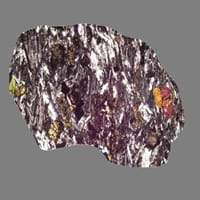Definition
A carbonate rock which is matrix supported and contains over 10% allochems in a carbonate mud matrix.
Trachyte is a grey fine-grained volcanic rock which mainly consists of alkali feldspar
Discoverer
Unknown
Alexandre Brongniart and René Just Haüy
Etymology
From the English mud and stone, from low German mudde and stainaz
From Greek trakhus rough’ or trakhutēs roughness
Class
Sedimentary Rocks
Igneous Rocks
Sub-Class
Durable Rock, Soft Rock
Durable Rock, Medium Hardness Rock
Group
Not Applicable
Volcanic
Other Categories
Fine Grained Rock, Opaque Rock
Fine Grained Rock, Opaque Rock
Texture
Clastic
Aphanitic to Porphyritic
Color
Black, Blue, Brown, Green, Grey, Orange, Red, White, Yellow
Black, Brown, Dark Greenish - Grey, Green, Grey, Light to Dark Grey, White
Durability
Durable
Durable
Scratch Resistant
Yes
Yes
Appearance
Rough and Dull
Banded
Interior Uses
Decorative Aggregates, Flooring, Interior Decoration
Decorative Aggregates, Flooring, Homes, Interior Decoration
Exterior Uses
As Facing Stone, Garden Decoration, Roof Tiles
As Building Stone, As Facing Stone, Paving Stone, Garden Decoration, Office Buildings
Other Architectural Uses
Curbing
Curbing
Construction Industry
Cement Manufacture, Construction Aggregate, for Road Aggregate, Making natural cement, Raw material for the manufacture of mortar
As Dimension Stone, Building houses or walls, Cement Manufacture, Construction Aggregate, for Road Aggregate, Landscaping, Making natural cement, Manufacture of Magnesium and Dolomite Refractories
Medical Industry
Not Yet Used
Not Yet Used
Antiquity Uses
Artifacts, Sculpture
Artifacts, Monuments, Sculpture, Small Figurines
Commercial Uses
Cemetery Markers, Pottery
Cemetery Markers, Creating Artwork
Types
Marl, Shale and Argillite
Not Available
Features
Available in Lots of Colors and Patterns, Smooth to touch, Very fine grained rock
Available in Lots of Colors and Patterns, Is one of the oldest rock, Matrix variable
Archaeological Significance
Monuments
Not Yet Used
Used
Famous Monuments
Not Applicable
Data Not Available
Famous Sculptures
Data Not Available
Data Not Available
Formation
Wackestone is a type of sedimentary rock formed when a river carries or transports pieces of broken rock as it flows. These particles settle down and are then compacted due to high temperature and pressure hence forming Wackestone.
Trachyte is an igneous volcanic rock with an aphanitic to porphyritic texture. It is the volcanic equivalent of syenite rock and forms as a result of magmatic differentiation.
Mineral Content
Biotite, Chlorite, Feldspar, Micas, Muscovite or Illite, Plagioclase, Pyrite, Quartz
Augite, Biotite, Feldspar, Hornblade, Plagioclase, Quartz
Compound Content
Aluminium Oxide, NaCl, CaO, Iron(III) Oxide, Silicon Dioxide
Potassium Oxide, Sodium Oxide, Silicon Dioxide
Types of Metamorphism
Not Applicable
Cataclastic Metamorphism, Contact Metamorphism, Regional Metamorphism
Types of Weathering
Biological Weathering, Chemical Weathering, Mechanical Weathering
Biological Weathering, Chemical Weathering, Mechanical Weathering
Types of Erosion
Chemical Erosion, Sea Erosion, Wind Erosion
Chemical Erosion, Coastal Erosion, Glacier Erosion, Sea Erosion, Water Erosion, Wind Erosion
Grain Size
Very fine-grained
Fine Grained
Fracture
Conchoidal
Not Available
Porosity
Highly Porous
Less Porous
Cleavage
Perfect
Not Available
Toughness
2.6
Not Available
Specific Gravity
2.2-2.8
2.7
Transparency
Opaque
Opaque
Density
2.4-2.8 g/cm3
2.43-2.45 g/cm3
Specific Heat Capacity
Not Available
Resistance
Heat Resistant, Impact Resistant
Heat Resistant, Impact Resistant, Wear Resistant
Deposits in Eastern Continents
Asia
Bangladesh, China, India, Russia
China, India, Iran, Saudi Arabia, Sri Lanka, Taiwan, Thailand, Turkey, Vietnam
Africa
Ethiopia, Kenya, Morocco, South Africa, Tanzania
Angola, Egypt, Madagascar, Namibia, Nigeria, South Africa
Europe
Austria, France, Germany, Greece, Italy, Romania, Scotland, Spain, Switzerland
Bulgaria, England, Germany, Norway, Romania, Switzerland
Others
Not Yet Found
Not Yet Found
Deposits in Western Continents
South America
Bolivia, Chile, Colombia, Ecuador, Peru, Venezuela
Brazil, Chile
Deposits in Oceania Continent
Australia
New South Wales, New Zealand, Queensland, Victoria, Western Australia
New Zealand, Queensland, South Australia, Western Australia










